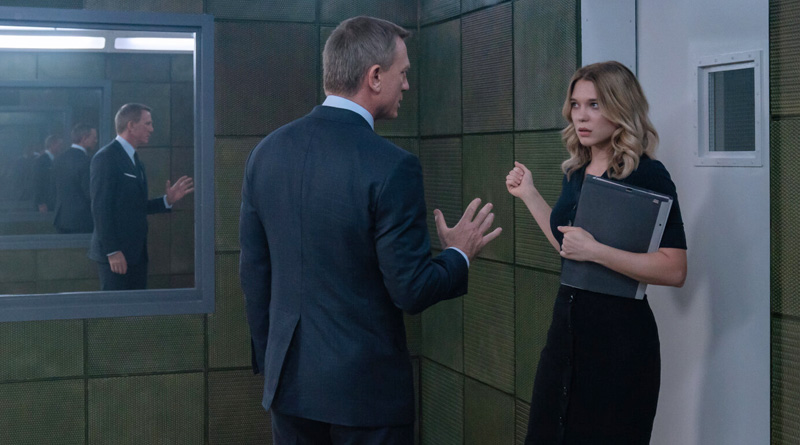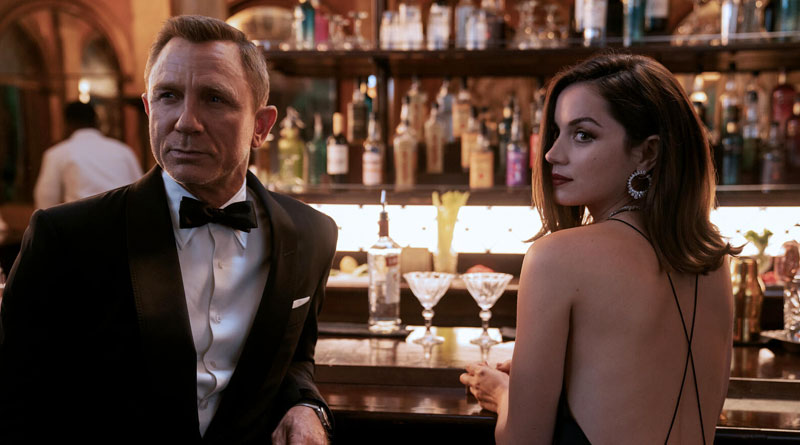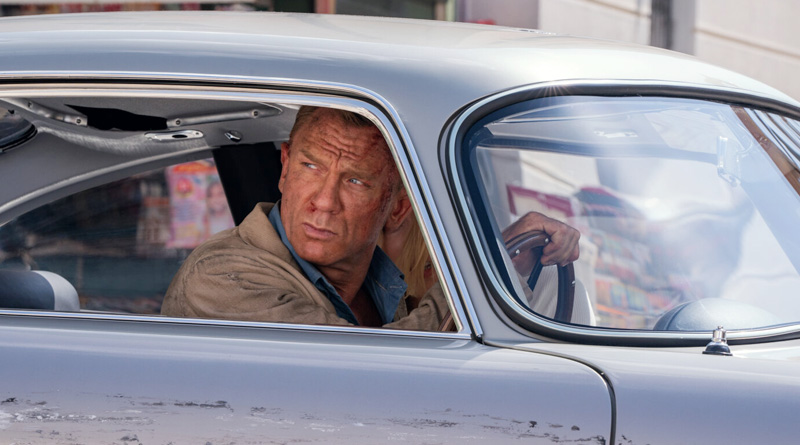No Time to Die (2021) Review
Do you know that awful feeling when you anticipate something (in this case, a film) for so long, only to end up with a bitter disappointment? Well, that’s exactly how I felt after I watched No Time to Die. Seriously, even after the end credits roll, I was sitting there in the dark and kept wondering why the long-awaited and of course, long-delayed Daniel Craig-era Bond film doesn’t turn out as good as I really wanted it to be. I mean, given the calibre of Cary Joji Fukunaga, who made such a lasting impression in the first season of HBO’s True Detective, I figure he’s the right man for the job even after the original director Danny Boyle bailed out due to creative differences.
It’s not that No Time to Die is entirely a letdown because the film does get off to a promising start. This includes the extended pre-credits sequence detailing a violent flashback and later, the Matera-set chase involving a motorcycle (the incredible bike jump still wowed me on the big screen even after seeing that scene being heavily promoted in numerous trailers) and a souped-up Aston Martin DB5, complete with Gatling guns and smokescreen.
For a while there, it was a well-paced series of taut and escalating moments, with the exception of Cary Joji Fukunaga’s penchant for shooting the action setpieces using lots of fast camera movements and editing that feels like he can’t wait to move on to the next scene. In other words, for all the supposedly exciting moments that occurred on the screen, he doesn’t let us sink in and fully enjoy the elaborate choreography. Besides, what’s the point of spending so much money (a whopping US$250 million!) with one of them used extensively for practical stunts if the film ends up being shot in an incomprehensible way?

Not to mention Cary Joji Fukunaga also botches the opportunity to elevate these scenes more cinematic since No Time to Die earns its distinction as the first Bond film to be partially shot with IMAX film cameras. It’s like how Michael Bay ruined the chance for making good use of IMAX film cameras when he shot them in Transformers: The Last Knight. The only significant difference between Fukunaga and Bay is that the latter did it a lot worse with his messed-up shaky-cam approach.
Following the Matera-set chase set pieces, subsequent action sequences are mostly a hit-and-miss affair, with the shootout in Cuba and the elaborate moment in the foggy forest are worth mentioning here. The former features Ana de Armas as Bond’s contact, Paloma and she certainly knows how to make an entrance in a stunning evening gown. She even brings a refreshingly cheeky and fun personality to her otherwise typical Bond girl persona and also proves to be an expert in martial arts and handling guns. If that’s not enough, she shares good chemistry with Daniel Craig’s Bond (they previously collaborated in 2019’s Knives Out) while the whole Cuba scene brings an overall energetic vibe to a film that is mostly sullen and dead-serious.
Some other action sequences, however, do not really work out as well as I thought. Case in point includes the underwhelming final third act and even though it includes a would-be memorable moment shot in a single take (something that Cary Joji Fukunaga was already good at in True Detective), his decision to film it using a handheld camera instead of a smooth, Steadicam-style somehow diluted the excitement.

Now, for the plot: One should know that No Time to Die is a direct sequel to 2015’s Spectre (that means it’s not a good idea to watch this as a standalone Bond film because the Daniel Craig-era of James Bond is one interconnected cinematic universe stretching all the way back to 2006’s Casino Royale). When we last meet Bond and his lover, Madeleine Swann (Léa Seydoux) at the end of Spectre, we see them leaving together in an Aston Martin DB5. They are now having the time of their lives in Matera, Italy but it doesn’t take long before the past catches up with them.
Long story short, Bond learns that Swann is hiding something and he ends up living off the grid somewhere in Jamaica for five years. During those years where he is completely absent from active duty, his superior M (Ralph Fiennes) has since appointed Nomi (Lashana Lynch), an MI6 agent as the new 007. But Bond is back in action when his old friend, CIA agent Felix Leiter (Jeffrey Wright) wanted his help for a mission to locate a kidnapped scientist named Valdo Obruchev (David Dencik). The mission, in turn, has something to do with the mysterious Safin (Rami Malek) and a deadly new bioweapon.
Cary Joji Fukunaga, who also co-wrote the screenplay alongside Neal Purvis, Robert Wade and Phoebe Waller-Bridge, try so hard to tie up whatever loose ends left in the past four Bond films while bringing in a significant new character. That new character in question is Safin played by Rami Malek. Roping in an Oscar winner (he won Best Actor for his role as the late Freddie Mercury in 2018’s Bohemian Rhapsody) is a nice touch and I figure Rami Malek can pull off a memorable villain.

Too bad that’s not the case because his character feels more like… an afterthought. He may have the creepy look, complete with a heavily-scarred face but the appearance alone isn’t enough to offset his lack of character development. We learn little about his so-called tragic backstory and even his motivation related to everyone involved and his plan to use the new bioweapon technology is as superficial as it comes.
It doesn’t help either when Bond doesn’t really interact with him until much later in the film and even by then, it’s all too little and too late. The film doesn’t forget Christoph Waltz’s Blofeld, who is previously seen in Spectre but instead of making good use of his appearance, it’s a pity that he’s wasted here. It was as if Cary Joji Fukunaga simply did everyone (fans of Waltz’s Blofeld, that is) a favour by adding him as mere fan service but hardly bother to give him anything substantial to work with.
Then, there’s the introduction of a new 007 agent in the form of Nomi played by Lashana Lynch. Her no-nonsense portrayal could have been useful if the story gives her something significant to make her character worthwhile. But like Christoph Waltz’s Blofeld, she too is wasted and her role is equivalent to a window dressing. What’s even worse is the lack of chemistry between her and Bond. Speaking of the latter, I was perhaps among the minorities who actually thought Daniel Craig and Léa Seydoux’s on-screen chemistry in Spectre. But in No Time to Die, I was surprised to see their chemistry is almost non-existent. It’s more like watching these two attractive couple looking all great on the big screen but little else matters when comes to delving into their characters deeper.

Cary Joji Fukunaga isn’t just content in giving us a typical Bond film as he also desperately wanted to subvert our expectations, particularly during the second half. While adding in something new would be a refreshing change of pace if done right, the second half of the film grows increasingly (and unnecessarily) convoluted and even murky in some moments.
Apart from the promising pre-credits opening sequence, No Time to Die has some good production values and Hans Zimmer’s riveting score, where he combines new musical composition with familiar Bond themes is equally praiseworthy.
As for the cast, Daniel Craig delivers a typically engaging performance in his fifth and final role as James Bond. It’s just too bad the story doesn’t justify all the sufferings that his character is forced to go through. The aforementioned Ana de Armas as Paloma is among the best things that ever happened in this film while Ben Whishaw and Naomie Harris, both respectively reprising Q and Moneypenny provide decent supports in their otherwise underwritten roles.
Well, so much for the would-be memorable send-off for the Daniel Craig-era of Bond films. Perhaps Cary Joji Fukunaga gets too ambitious to handle such an epic scope navigating the existing and new plot threads connected to the previous Bond films. The nearly three-hour length, the longest film ever seen in the history of the Bond franchise would have worked better with a shorter runtime (maybe around 130 minutes). And a tighter edit too, where they could have done without introducing Rami Malek’s Safin and his whole story connected to Blofeld and yes, even Madeleine Swann in the first place. Not especially how the story mishandled his character arc.





